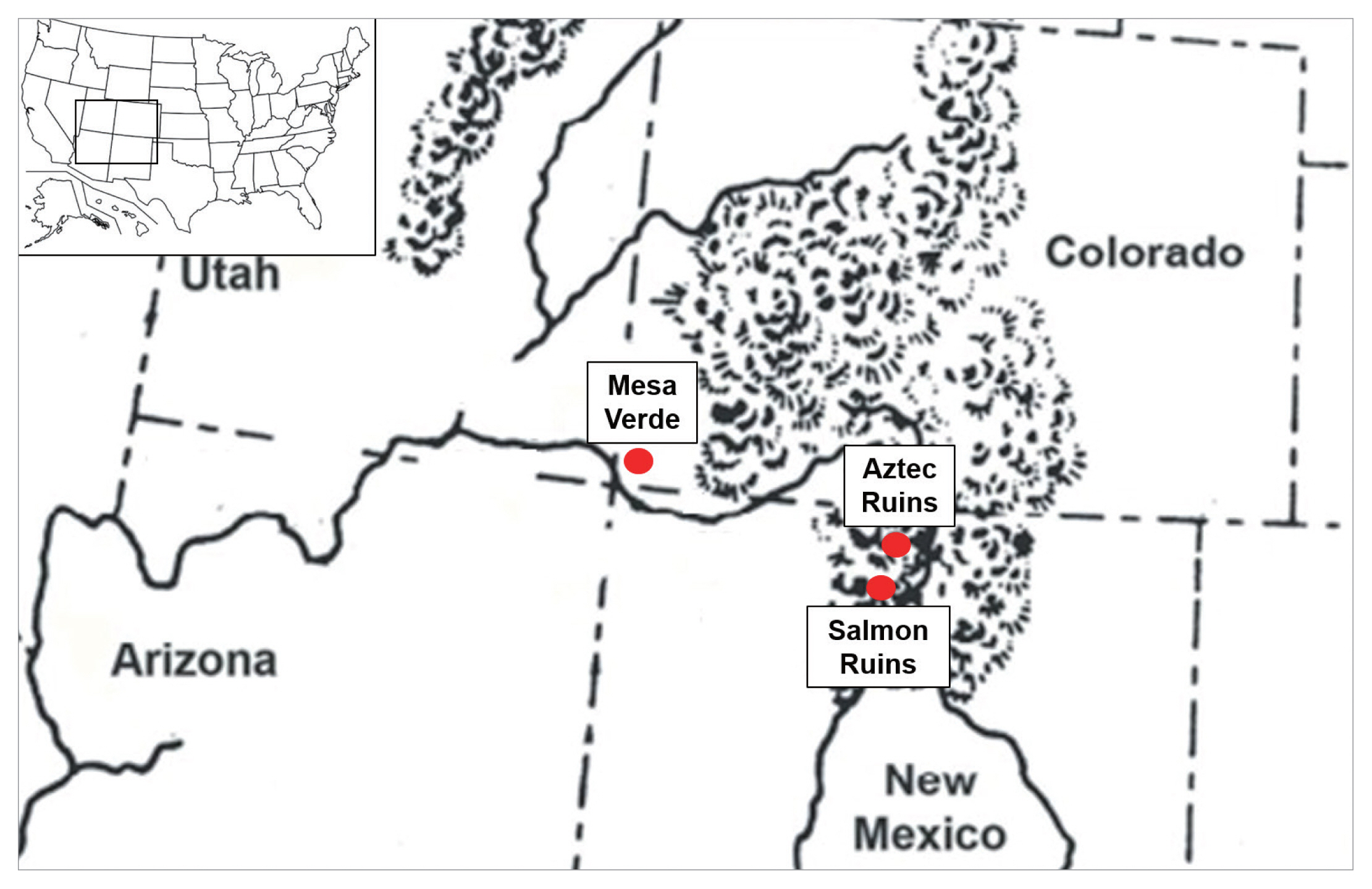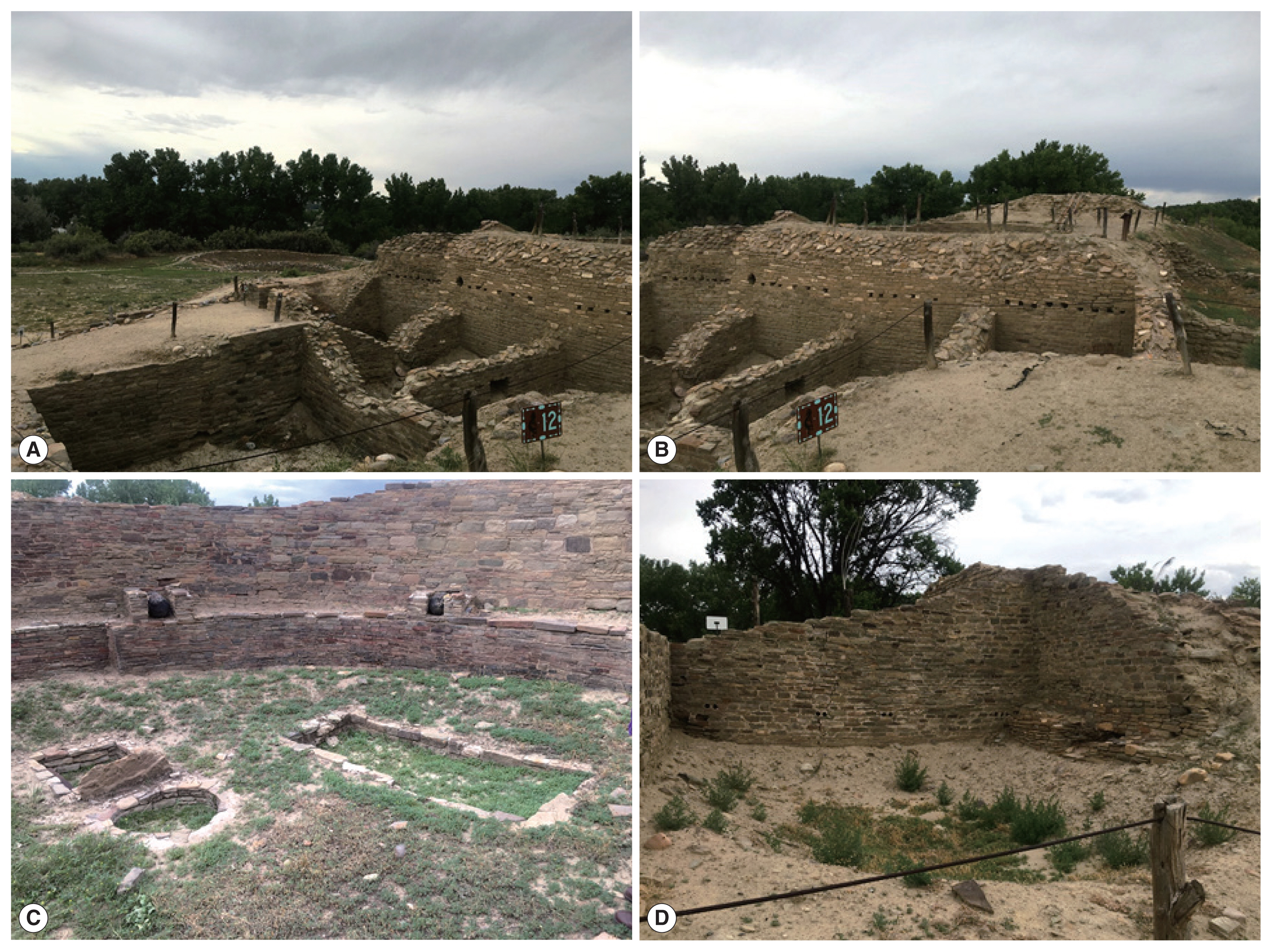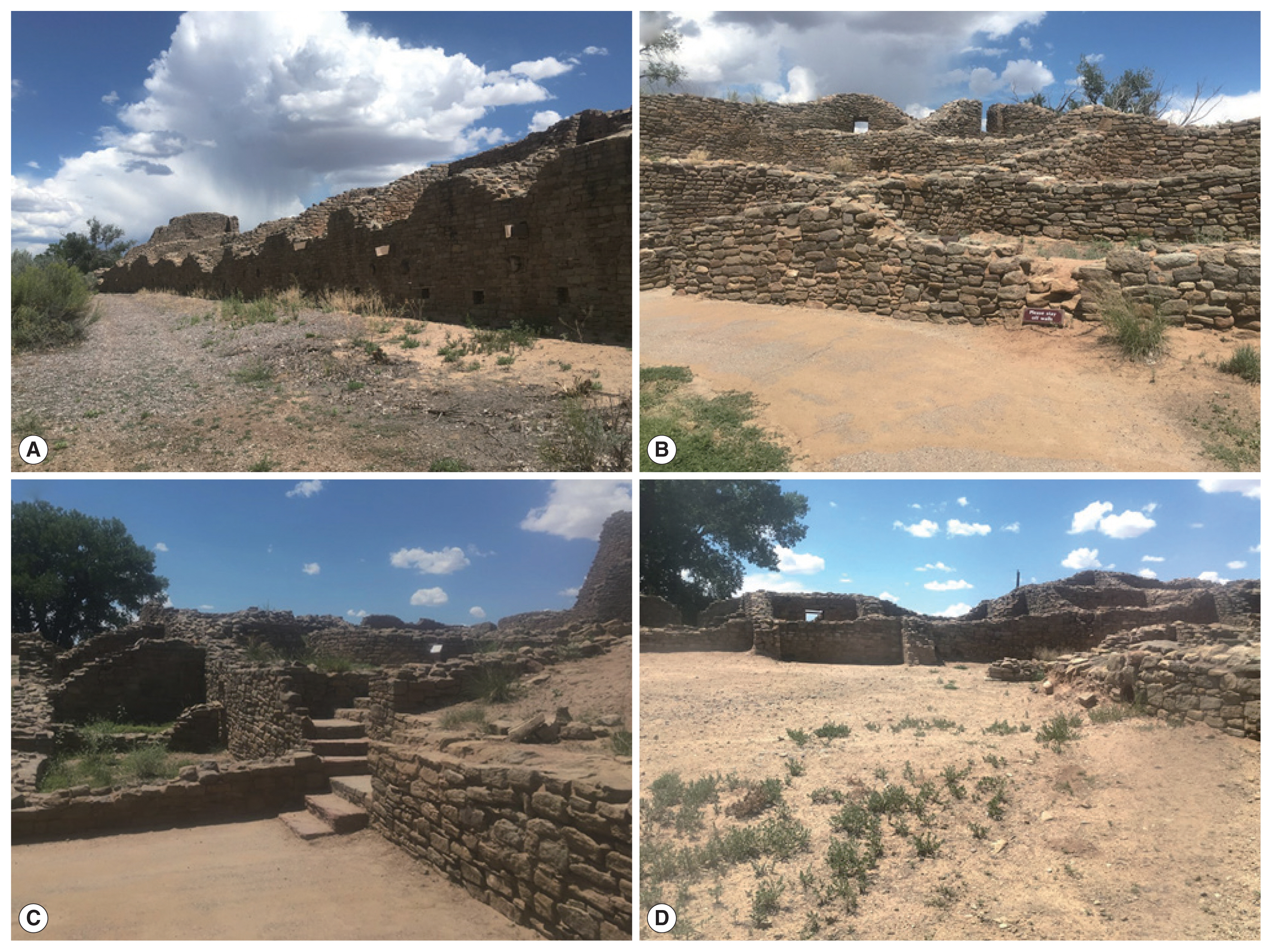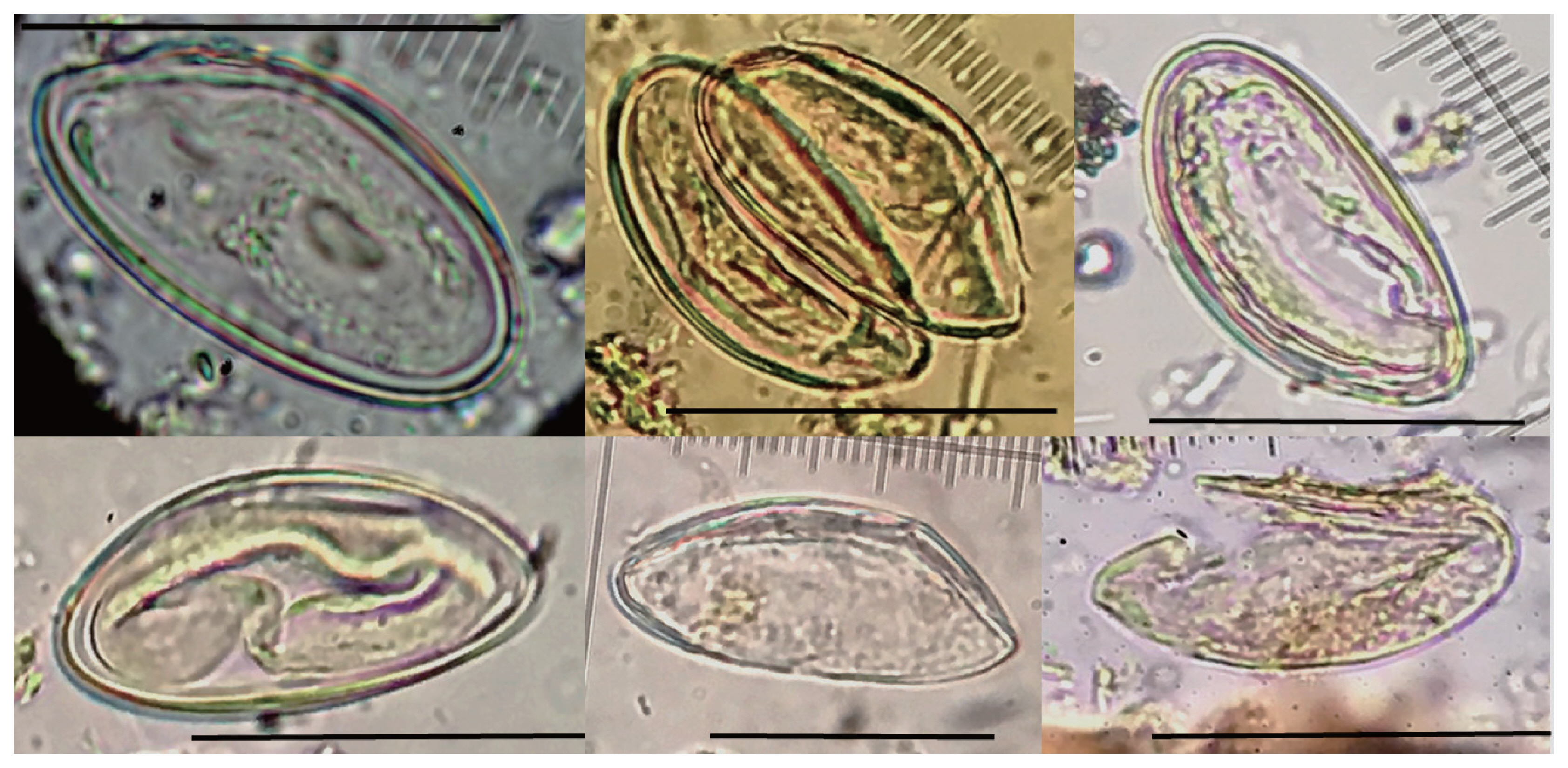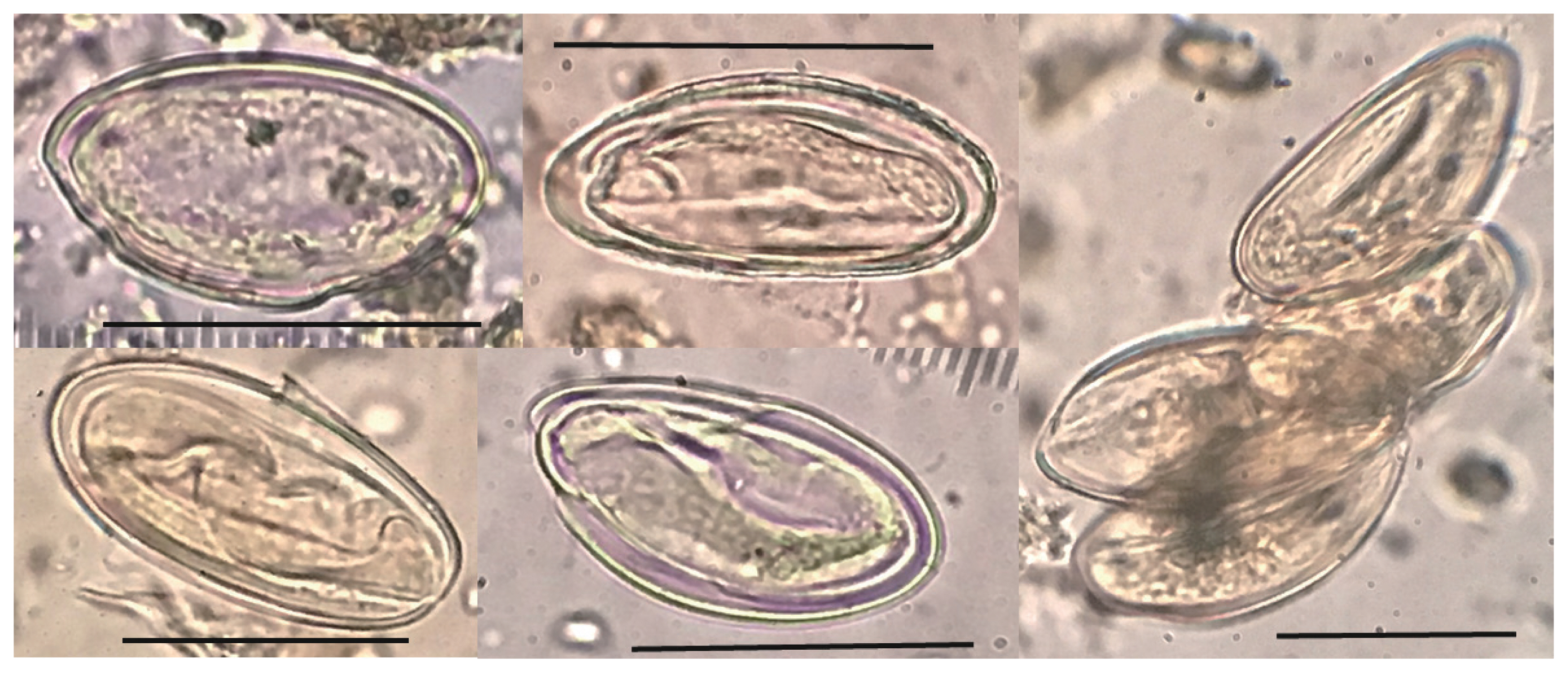Since the beginning of parasitological studies on the Colorado Plateau of the American Southwest, pinworm (Enterobius vermicularis) has been the most commonly observed parasite [1]. This is notable because the prevalence and intensity of infection for Ancestral Puebloans of the region exceeds any other population in the Americas and is far higher than those recorded from modern clinical studies [2]. We are looking at the archaeological reconstructions for the region and also ethnological data to understand why this is. Previously, we explored causes for infection related to standard Puebloan behaviors [1]. In this paper, we look at features of prehistoric Ancestral Pueblo behavior that would have caused concentration of people in large sites and, therefore, exacerbated infection. We propose that increase of regional warfare between AD 1130 and 1250 resulted in population aggregation for reasons of security. Our most recent studies of parasitism show that the highest prevalence of Pueblo pinworm parasitism occurred at Salmon Ruins and Aztec Ruins (Fig. 1). Our data for these sites are dated precisely to this period of violence [1,3].
For the Colorado Plateau, there is evidence of warfare at certain time periods. Generally, there is a recognized relation between climate oscillations, population aggregation and conflict [4–8]. At certain time periods, there was increased evidence of warfare. For the Pueblo region, there was a long period of stable climate from the late 9th century into the 12th century. By AD 1130, there were signs of stress due to climate changes that affected agriculture [8]. Shortly after this point, evidence of warfare and massacres accumulated. As a result, certain culture systems collapsed. People gathered inside fortified stonewalled constructions in search of safety [8]. Large Pueblo towns with open plazas were enclosed with stonewalls. The most famous of these were Chacoan Great Houses. This period of violence lasted until AD 1250, occurring in the middle of the Pueblo III period (AD 1100–1300).
Our study assemblages from the Great Houses of Salmon Ruins (Fig. 2A–D) and Aztec Ruins (Fig. 3A–D) date to this period. Both were built earlier as part of the Chaco system, around AD 1090 to 1120 [9,10]. The Chaco system originated with cultural developments in Chaco Canyon, New Mexico, which resulted in a highly complex society. The Salmon Ruins Great House was the largest built at that time outside Chaco Canyon and had around 275 to 325 rooms divided in 3 stories [9,10]. It was built in an alluvial valley next to the San Juan River, which provided conditions to implement water-management technologies in order to favor agriculture. The Chacoans that built Salmon Ruins continued to expand northward and constructed the even larger pueblo Great Houses known today as Aztec Ruins [9,10]. It is important to note that Aztec Ruins is unrelated to the later Aztec culture of central Mexico. The Aztec Ruins were built by more ancient Ancestral Puebloans of the Colorado Plateau. The Aztec East Pueblo was constructed around year AD 1120. Aztec East Pueblo complemented Aztec West, which is the largest Great House. This Great House was constructed 400 m distant from the Animas River. It was built between AD 1100 and 1130 in 2 phases [11]. Initially, it had 400 rooms distributed in 3 stories. Thus, Aztec Ruins is a complex of several sites. It seems that the Aztec Ruins complex was built in an attempt to replace Chaco Canyon as the center of the Chaco system. Eventually, both Salmon Ruins and Aztec Ruins failed as long-lasting centers [11].
After the Chacoans left the pueblos, they were then reoccupied by local San Juan peoples and later by people from the Mesa Verde, Colorado [9,10]. When the sites were reoccupied, they already had a defensive layout centered on elevated central structures [8]. As such, the sites had characteristics of Pueblo III defendable sites, with architectural plans pre-adapted for defense [4–8]. Also consistent with Pueblo III defendable sites, the pueblos are composed of contiguous roomblocks that could shelter large, concentrated populations, including numbers of combatants. Both sites have permanent access to clean, flowing water [11]. During the periods of violence, large communities in excess of 100 rooms had a greater chance of survival [4–8]. Pueblo III period Salmon Ruins was composed of about 300 rooms in 3 stories. Aztec Ruins was a cluster of pueblos, which increased in size during Pueblo III. In total, the Aztec Ruins complex includes the West Ruin, the East Ruin of about 156 unexcavated rooms, and various other structures including 2 small Pueblo III villages built adjacent to the large great house Pueblos. Therefore, Aztec Ruins was an especially large complex of towns. Salmon Ruins was used as a residence and ceremonial center during this period of violence [9,10]. Both sites were impressive centers of ceremony and residence, ideal for supporting large numbers of people in troubled times.
We suggest that the conflict in the region, at the time that these Great Houses were reoccupied, created a sense of threat that resulted in the concentration of people at these 2 sites [4–8]. Therefore, the threat of regional violence served as a social stimulus to create massed populations susceptible to crowd infections [4–8].
The pinworm life cycle is especially enhanced in crowd conditions [12]. After copulation, gravid females migrate within the lumen of the intestine to the perianal region, where they oviposit the eggs and die soon after this process [12]. Pinworm eggs are elongate-oval, flattened in one side and present a thin shell. They measure between 50–60 μm in length and 20–30 μm in width. The eggs contain partially developed juveniles that can reach the infective stage after approximately 6 hr at body temperature [12].
Pinworm eggs are very light and for this reason can be carried by the air currents and contaminate all the living space. Infection can occur with 1) the ingestion of the eggs by contact with hands and contaminated objects, 2) by inhaling and subsequently swallowing the eggs present in the air or 3) by retroinfection when eggs on the perianal area hatch and the larvae enter the anus reaching the intestine [12].
Coprolites were collected from latrines preserved in Salmon Ruins and Aztec Ruins. Salmon Ruins coprolites were collected from room 62W (Fig. 2D), which is the only remaining latrine after a fire burned Salmon Ruins around 1280 AD. Sixty-seven coprolites were collected from different strata of room 62W, in order to diversify and increase variability of samples that represent the population. Until now, 2 latrines were identified at Aztec Ruins West, rooms 219 and 225 [3]. Twenty-one coprolites were collected from room 219 and 22 coprolites were collected from room 225, totaling 43 coprolites. All samples were collected based on the same collection strategy applied in Salmon Ruins coprolite collection.
The detailed methods applied in the processing of these coprolites are described in previous study [3]. The samples were weighed and rehydrated in 0.5% trisodium phosphate aqueous solution for 24 hr. Lycopodium tablets containing approximately 12,500 spores were added per gram of sample. Then, the rehydrated samples were disaggregated and screened, in order to separate the macroresidues from the microresidues [3]. The macroresidues were dried on filter papers at room temperature and analyzed with a stereo microscope. Data on dietary analyses are described in another paper [13].
The sediments containing the microresidues of each sample were concentrated by centrifugation. Drops of the this concentrate of each sample were pipetted to microscope slides, mixed drops of glycerin, cover-slipped and analyzed with light microscope in 100× and 400× magnifications.
In Salmon Ruins, 22 of the 67 samples analyzed were positive, representing 32.8% prevalence [1] (Fig. 4). One latrine at Aztec Ruins (room 219) was greatly affected by decomposers [3: see Fig. 4A–C]. However, 3 of 21 samples (14%) were positive, demonstrating a prevalence of infection higher than the prevalences found in modern studies, which vary between 5% and 10% of fecal samples positive for eggs in infected people [1,3]. It also indicates that despite the pressure of nematophagous mite predation on eggs, the original concentration of eggs must have been much higher [3]. Another Aztec Ruins latrine (room 225) had better preservation and 16 of the 22 (72.7%) samples were positive [1] (Fig. 5). Therefore, the sites of Salmon Ruins and Aztec Ruins exhibit the highest prevalences for pinworm ever recorded from clinical or archaeological literature [2].
Our analyses of pinworms at these sites showed a high rate of infection, which indicates that a great amount of eggs was present in the environment. The numerous rooms in these ruins were used for different purposes, including ceremony, which involved many people attending rituals for periods of time. This was also a factor that probably contributed to increase transmission in these populations [1]. Also, the absence of warfare evidence at the sites indicates that they were effective at avoiding conflict due to population size and the citadel-like nature of the villages. This was effective in preventing attack, but made the populations more susceptible to infection. The large numbers of people aggregated to fend off the potential of conflict contributed to the scenario described above. Many individuals used the small rooms at the same time and inhaled the pinworm eggs present in the environment. It is noteworthy that of all of the Ancestral Pueblo sites studied for parasites, only Salmon Ruins and Aztec Ruins have distinct latrines established in roomblocks within the towns [1]. This signals concentrated populations that developed refined sanitation systems.
The high prevalence of pinworms also indicates that the habitation residents humidified the air and prevented death by desiccation of pinworm eggs [3,14]. Pinworm eggs rapidly die in arid environments [12,14]. Experiments show that after 12 hr of desiccation, nearly half of the eggs die. One third die after 24 hr. All eggs die at 5 days post-oviposition [14].
Humidification of Aztec Ruins and Salmon Ruins begins with the fact that they are in river valleys close to water. In such areas, the aridity of the desert is reduced. However, the humidification of the indoor habitation would be accomplished by daily activities such as cooking and physiological activities such as breathing. The other social aspects of Puebloans would have come into play. Puebloan activities were communal, as represented archaeologically by activity rooms. In times of violence, the tendency to carry out activities in groups within enclosed rooms would have been increased [4–8].
The other social aspect of Puebloans, collective lifestyle, would have come into play [3,15]. Puebloan activities were communal, as represented archaeologically by activity rooms with many workstations. For example, corn processing rooms typically have multiple grinding stones lined up to be used by several people simultaneously [16]. Similarly, kivas have evidence of multiple simultaneous users. Circulation of air in rooms of communal activity would have spread airborne pinworm eggs effectively. This was proposed for ceremonial kivas, which became nidi for infection [15]. Passive airflow in these rooms draws air into the round kivas with deflector slabs that circulated air throughout the rooms. In times of threat of violence, the tendency to carry out activities in groups within enclosed rooms would have been increased. The resulting inhalation of eggs would have been unavoidable. The more people using Pueblos in times of warfare, the greater the risk of inhaling eggs.
During the Pueblo III period of conflict, a period of violence against women has been documented archaeologically [17]. This indicates that women and children were especially vulnerable at this time [8,17]. Tacit in the studies of Pueblo III violence is the supposition that population concentration in defensible sites was for the protection of women and children [4–8,17]. Therefore, these population components would have been at greater risk of infection. It would be insightful to examine coprolites through molecular and steroid approaches to determine if latrines were primarily used by women [18,19]. In this way, one could assess the relative health risk of crowding on vulnerable population demographics resulting from the regional conflict.
In conclusion, the communal life of Ancestral Puebloans resulted in the establishment of pinworm infection by AD 200 [1]. The concentration of large numbers of people in large defensible villages enhanced pinworm transmission. Thus, the life cycle of pinworms was conducive to extreme transmission in large Pueblos. The uncertainty of security during the Pueblo III period of violence caused people to seek safety in numbers. As a result, high prevalence of infection occurred in sites like Salmon Ruins and Aztec Ruins. This was undoubtedly a major paleopathological condition for Pueblo III peoples.




